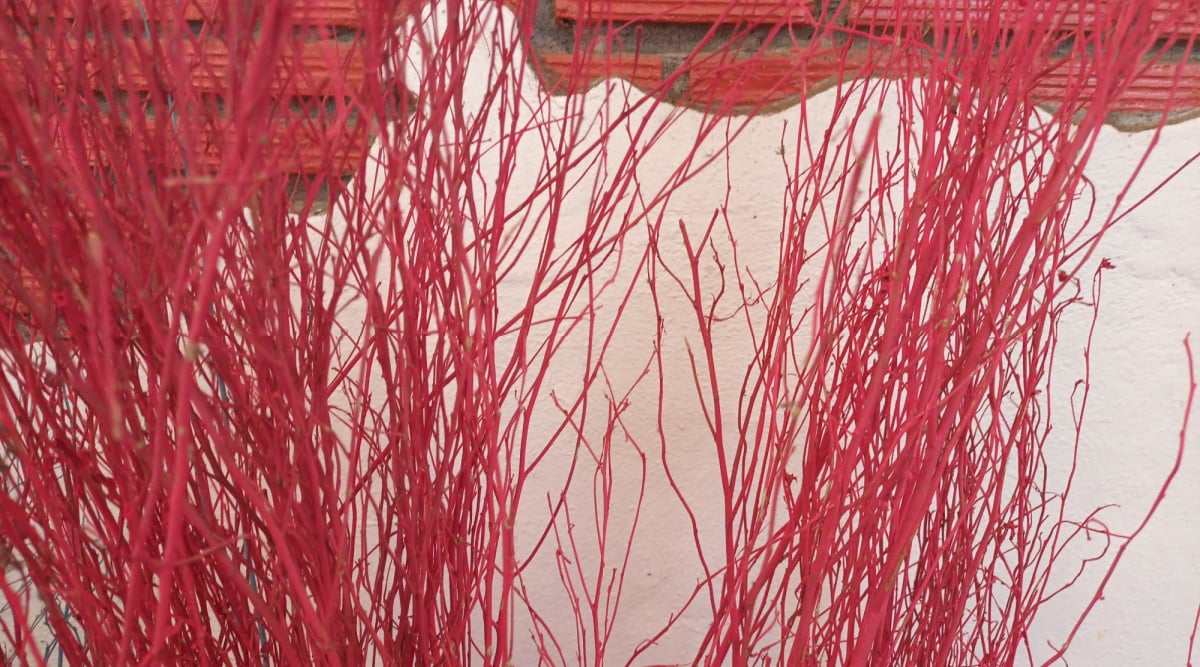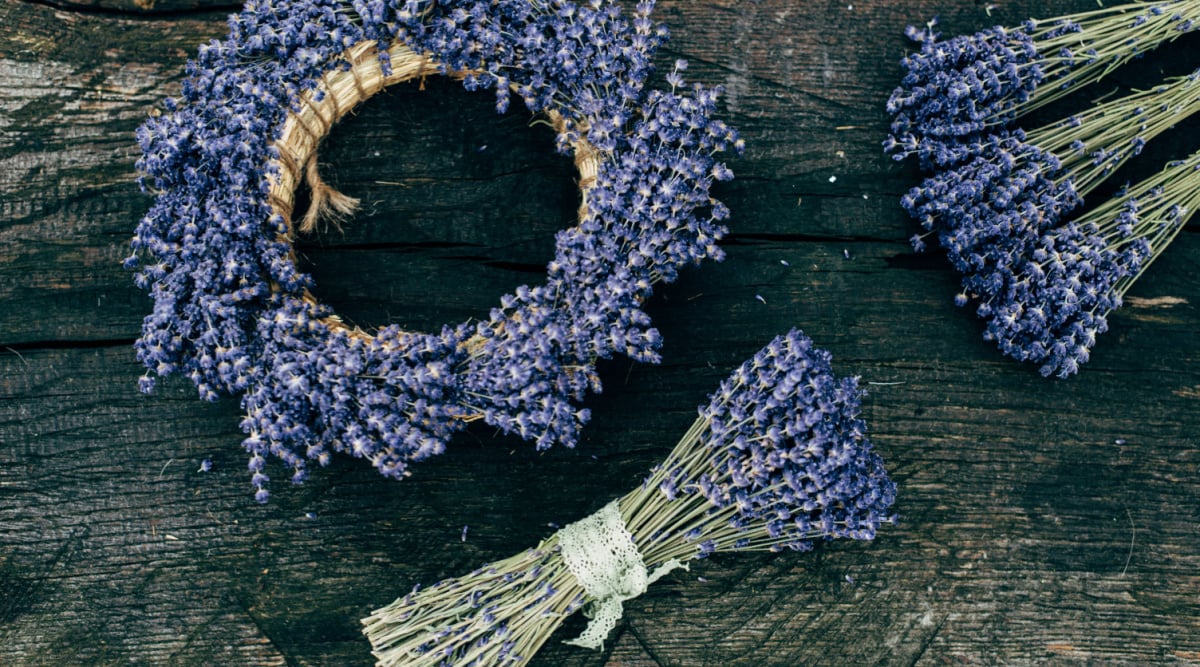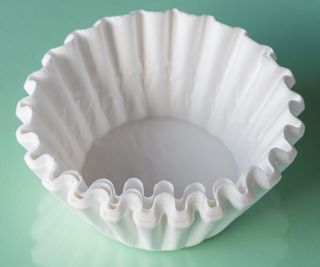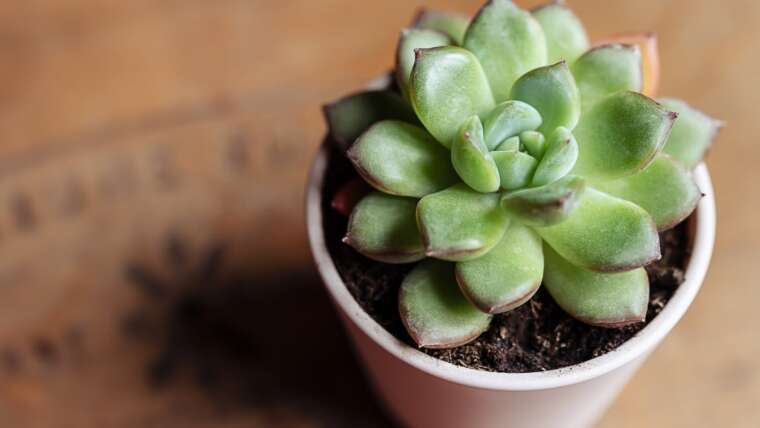The holidays are a time of spending, especially if you love to decorate your home from top to bottom. Bringing in holiday greenery like garlands, planters, or even a live Christmas tree is a traditional way to dress up your home. For creative gardeners, there is an easy way to cut down on your décor budget – making your own wreaths.
Wreaths are a holiday staple, decorating front doors, entryways, and walls to bring a touch of the outdoors in. Although they often look elaborate and complex, wreaths are surprisingly easy to make if you have the right tools.
All wreaths start with a good base, and for that, you can look to nature. These 17 plants are perfect additions to any wreath, combining the traditional and the out-of-the-box.
Spruce
Spruce is perfect for classic wreaths and needs minimal embellishment due to its rich greenery.
Spruce is great for a full, lush wreath with a holiday feel. The branches are ideal for traditional-looking wreaths, with a rich green that perfectly complements the classic red-green color palette.
The evergreen needles may not hold together for as long as the other options I list below. However, placing them in a cooler area outside rather than warm indoor environments will preserve their shape. As these are so full and dense, you won’t need much additional decoration when working with spruce.
Fir
 Fir is the wreath champ, maintaining lushness and a strong Christmas-like scent.
Fir is the wreath champ, maintaining lushness and a strong Christmas-like scent.
If you want your wreath to last throughout the long holiday season (and potentially longer if you’re one of those lazy decorators that keeps their wreaths up for months), fir will deliver. Even when packed tightly and shuffled around, the needles stay firmly in place, keeping the wreath looking lush for weeks and emitting a scent that screams Christmas.
Another benefit of using fir is that the branches are much softer than spruce, making them easier to work with. If you’ve never made your own wreath before, you may want to opt for fir to avoid struggling with tough, prickly branches.
Cypress
 This plant is perfect for wreath-making when combined with pine cones or berries.
This plant is perfect for wreath-making when combined with pine cones or berries.
Cypress is also soft and malleable but delivers a lighter and more delicate look than dense fir branches. The foliage looks almost feathery, adding wonderful texture and a subtle scent to welcome you home.
Soft cypress is great for combining with other decorations in your wreath, like pine cones or berries. Keep them in a cool area to ensure the branches maintain their shape and look their best as long as possible.
Pine
 Pine wreaths offer longevity, a festive scent, and easy crafting potential.
Pine wreaths offer longevity, a festive scent, and easy crafting potential.
Pine is probably the first thing that comes to mind when thinking of wreaths or the holidays in general. A pine wreath is one of the more traditional options, known for its longevity and festive fragrance. The branches are also easy to work with, ideal for beginner wreath makers.
Another benefit of pine is its availability. Pine is not tough to find and is great for combining with other decorations. Add fairy lights and a few red bows to make your wreath shine at all times of the day.
Juniper
 Juniper’s versatile branches make it an ideal base for a modern homemade wreath.
Juniper’s versatile branches make it an ideal base for a modern homemade wreath.
Juniper is another holiday classic ideal for use as a base in a homemade wreath with a modern twist. The branches are versatile, featuring different textures and shades that allow you to craft the perfect wreath for your space.
To ensure your juniper wreath lasts throughout the season, keep it in a cool spot away from direct sunlight. Also, mist the wreath occasionally to keep it moist, preventing the branches from losing their needles.
Holly
 This plant’s glossy leaves and vibrant berries enhance festive decor.
This plant’s glossy leaves and vibrant berries enhance festive decor.
Holly is a holiday season must-have in your home. It features regularly in Christmas decorations, including in homemade wreaths. The glossy leaves and bright berries add a quintessential Christmas-like look to your home décor, no matter where they are placed.
Holly doesn’t have quite the same structural look as rigid branches like spruce or pine. If you’re happy with that, you can make a wreath from holly alone, but you can also combine it with other foliage to provide contrast. Also, keep the toxic berries out of reach of pets or small children.
Boxwood
 Boxwood wreaths are versatile due to their dense leaves and flexible branches and can be used year-round.
Boxwood wreaths are versatile due to their dense leaves and flexible branches and can be used year-round.
With small leaves packed densely on malleable branches, even beginners will have no trouble crafting a lush wreath from boxwood. It may not be a traditional holiday choice, but that comes with its benefits, too – this wreath has year-round appeal.
The thin branches allow you to create a wreath in many shapes and sizes. For a minimalist look, stick with a few branches or pack them tightly for a more traditional wreath. The leaves and branches dry slowly, creating a long-lasting wreath that you can use as décor long after the festive season ends.
Dogwood
 Dogwood branches, especially red ones, offer vibrant options for holiday wreaths.
Dogwood branches, especially red ones, offer vibrant options for holiday wreaths.
While full and green wreaths are certainly the standard for the holidays, they aren’t the only option. If you prefer a more rustic or neutral look, branches alone make structural wreaths that suit modern, minimalist interiors well.
Dogwood branches are ideal for wood-only wreaths thanks to their vibrant colors. Red is best suited to the holidays, but any dogwood branches can be manipulated into a stunning wreath. Intertwine the branches with some evergreen leaves if you’re missing a pop of color.
Rosemary
 With its malleable woody stems, rosemary is perfect for crafting scented wreaths for your dining table.
With its malleable woody stems, rosemary is perfect for crafting scented wreaths for your dining table.
Those with productive edible gardens can also look to various herbs to craft a scented wreath perfect for hanging near your dining table. Rosemary is one of the best candidates thanks to its woody but malleable stems, easily trained around a wreath frame.
You’ll need plenty of rosemary to make a large wreath, so make sure your plant is big enough before you start. You don’t want to remove too much at one time, as this can stunt growth, especially during the chilly winter months.
Oregano
 Oregano adds lushness and a delightful aroma to holiday wreaths.
Oregano adds lushness and a delightful aroma to holiday wreaths.
If you live in a warmer climate and have plenty of oregano to go around, consider using the excess in your holiday wreaths. When used in larger bunches, the small leaves create a lush look and release a wonderful earthy scent bound to make your mouth water.
Like rosemary, you’ll need to harvest a lot of oregano at once to make a full wreath. If you don’t have enough, smaller wreaths are a great alternative ideal for place settings on your holiday dinner table.
Oregano wreaths do not last as long as some of the alternatives on our list, but for its fragrance alone, it’s well worth using it as a short-term solution!
Sage
 It adds a soft texture and a hint of silver to wreaths, complementing red berries.
It adds a soft texture and a hint of silver to wreaths, complementing red berries.
Lush sage leaves bring wonderful texture to a holiday wreath. The fluffy foliage has a much softer look compared to traditional wreaths, with a slight silvery sheen that contributes to the winter feel. They look even better when combined with bright elements like red berries to fill in any gaps.
Sage is a staple ingredient in many Christmas dishes, so filling the air with sage scent is a great opener to your holiday meal. Keep it close by and occasionally brush the leaves to release the fresh smell.
Lavender
 These purple flowers are ideal for brightening winter interiors during the holidays.
These purple flowers are ideal for brightening winter interiors during the holidays.
Another Mediterranean staple, lavender wreaths are stunning year-round, but particularly during the chilly season. They can ability to brighten winter interiors with a floral scent associated with warm summer days.
Using lavender in a wreath over December takes some planning, especially if you live in a cooler climate. Harvest the flowers throughout the year, collecting them in bundles to dry and hang. Then, when you’re ready, overlap these bundles over your wreath frame to create a fragrant wreath with a subtle pop of purple.
Bay
 Using bay laurel in holiday décor offers a tropical touch.
Using bay laurel in holiday décor offers a tropical touch.
You can’t go wrong using bay laurel to add a touch of the tropics to your holiday décor. Bay leaves are primarily grown for use in the kitchen, but the leaves also have great ornamental value. Both the leaves and branches hold their structure when dried, lasting beyond the holidays if crafted carefully.
Bay leaves have an earthy scent that can quickly fill a room, even when dried. They may not have a classic holiday look, but they bring a festive feel when combined with other traditional holiday décor like ribbons or baubles.
Eucalyptus
 Eucalyptus provides year-round beauty but is also an excellent choice for holiday decorations.
Eucalyptus provides year-round beauty but is also an excellent choice for holiday decorations.
Another option that looks good all year is eucalyptus. Often used in floral arrangements, the silvery-green leaves are highly sought after for their aesthetic value. They also release a subtle fresh scent that adds a lightness to your entry or walkways.
Because eucalyptus dries so well, you’ll get to keep your wreath as décor throughout the holidays and into the New Year. You can pair it with other décor to increase the festive factor or keep it simple for year-round appeal.
Dried Flowers
 Plan your unique winter wreaths by drying flowers from your garden in warmer months.
Plan your unique winter wreaths by drying flowers from your garden in warmer months.
For a more summery or autumnal look, start preparing for your wreaths in the warmer months by drying flowers from your garden. There is a long list of flowers that respond well to drying, especially when they are hung upside down. Then, bring them out as holiday decor for a unique twist on the traditional wreath.
Remember that dried stems that lack moisture will become brittle over time. If you want to use them in wreaths, either cut the flowers shorter and combine them with other foliage as a base or hang them in the bunches you plan to tie around your wreath frame from the get-go.
Final Thoughts
It’s always possible to purchase manicured wreaths during the holidays. But for crafty gardeners, making your own is much more exciting, using a combination of plants and decorations unique to your tastes.




